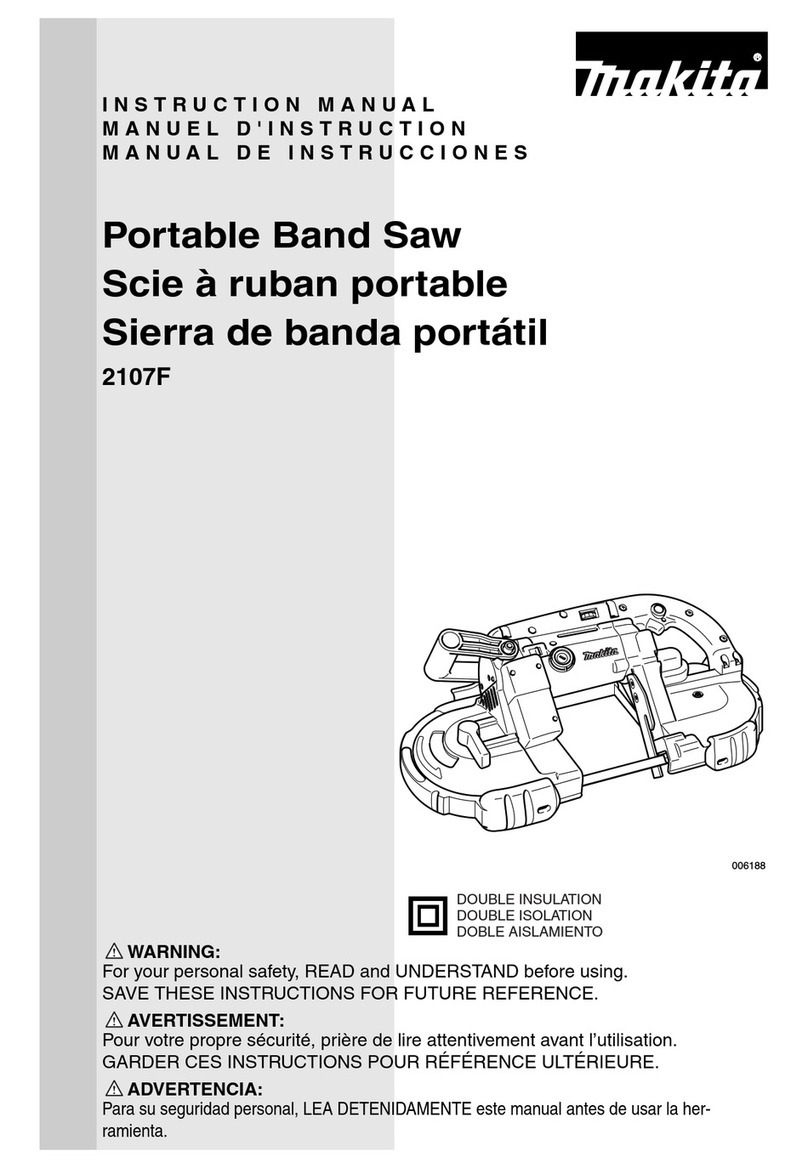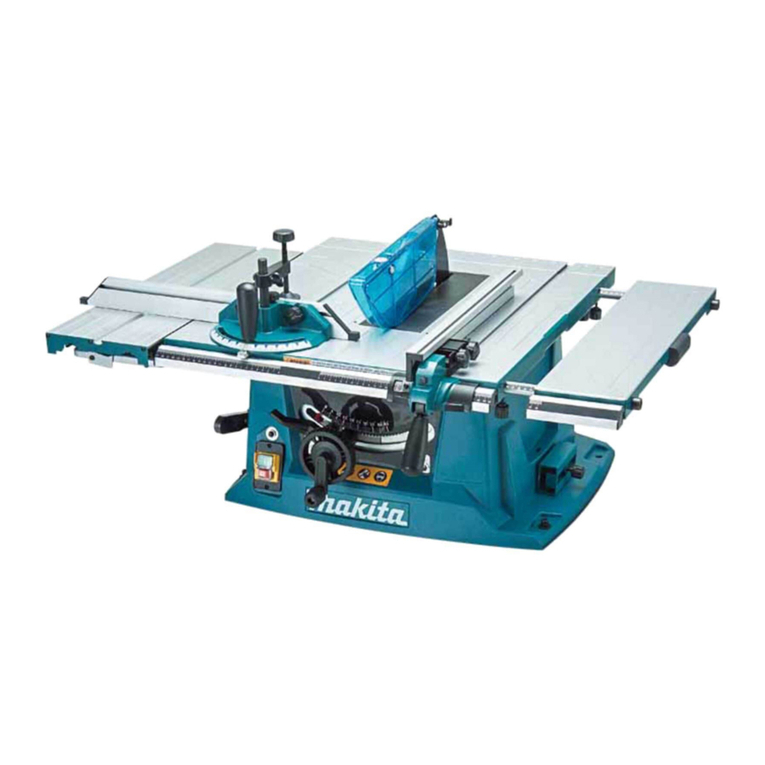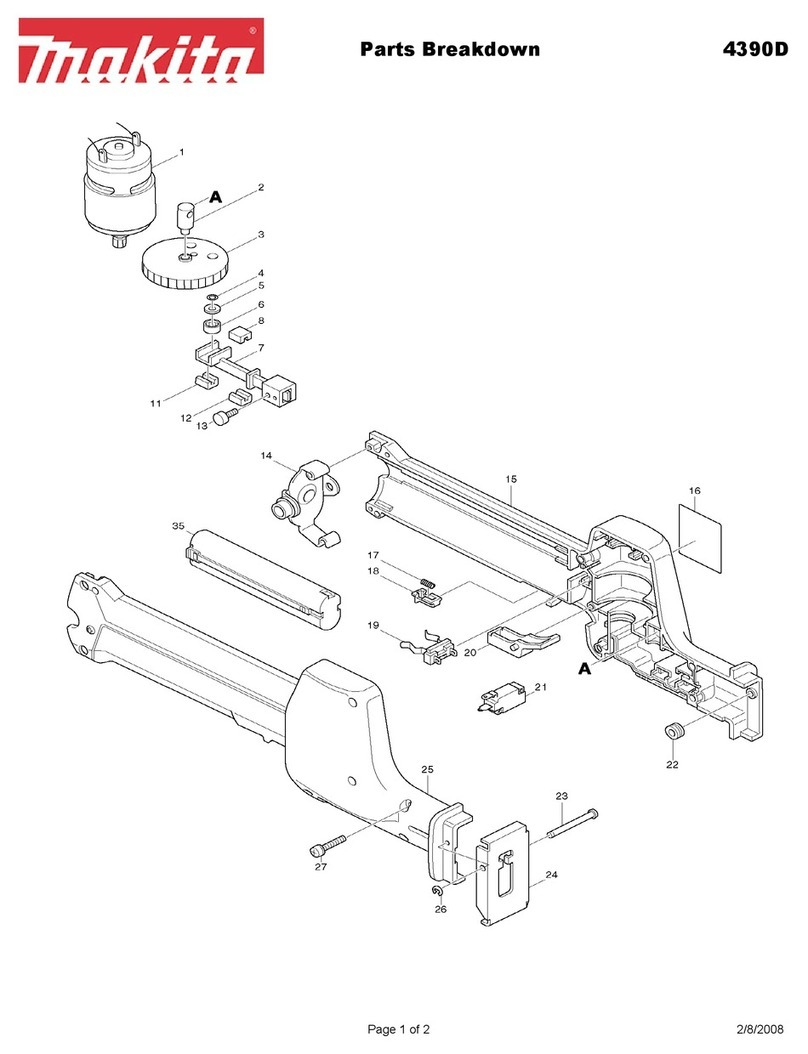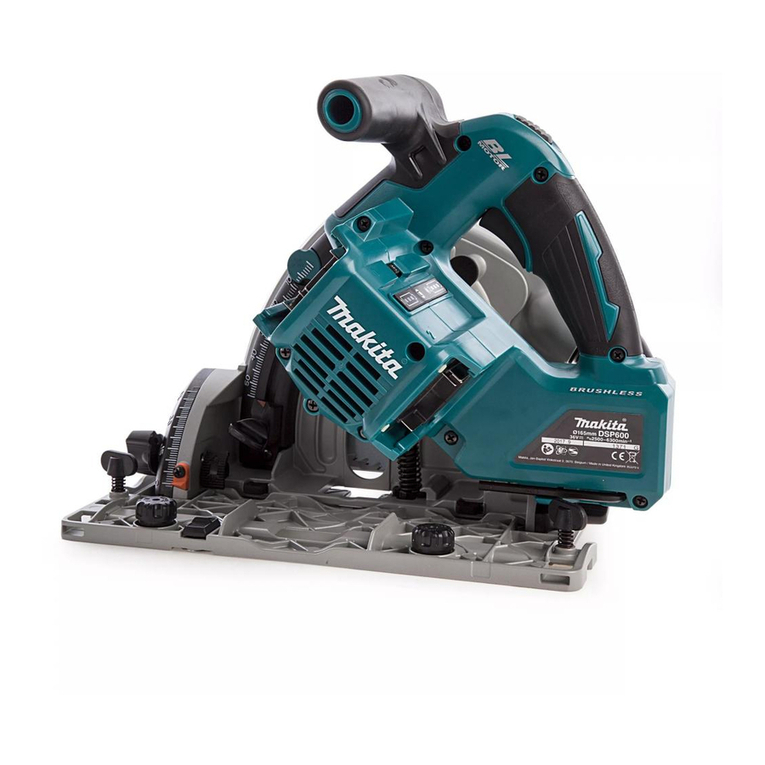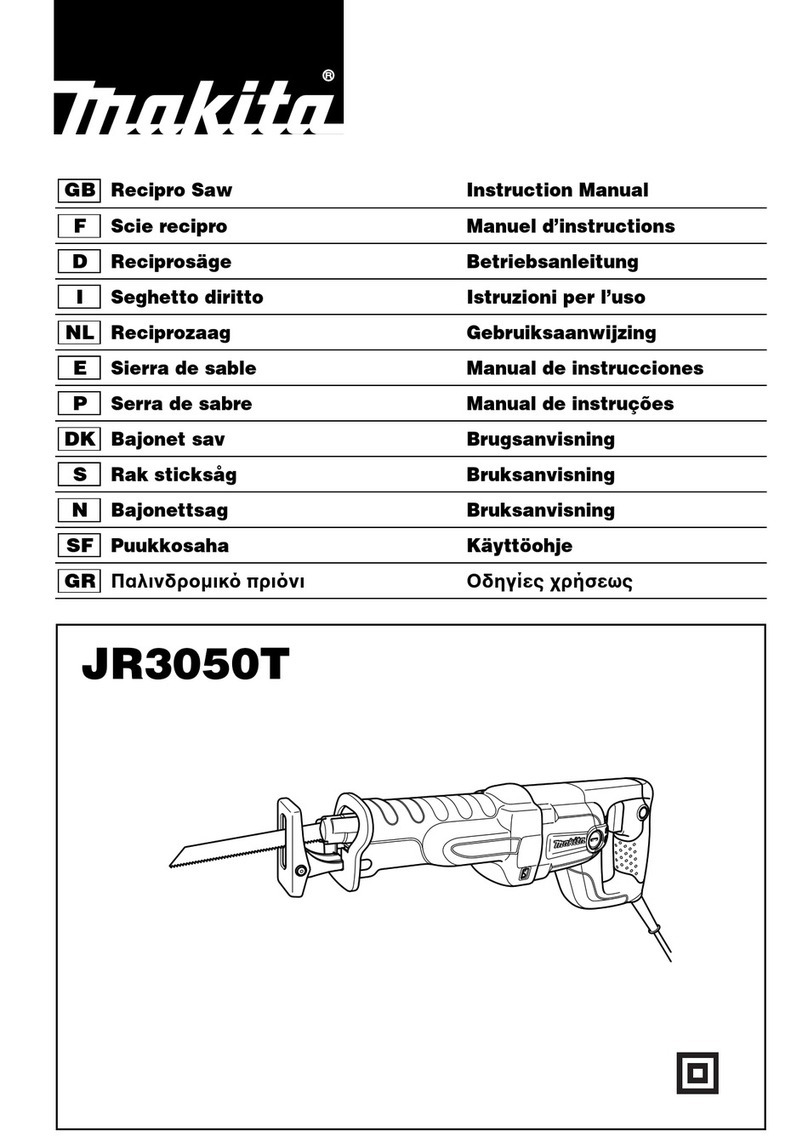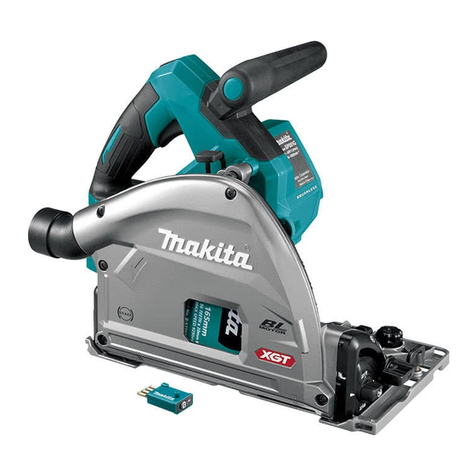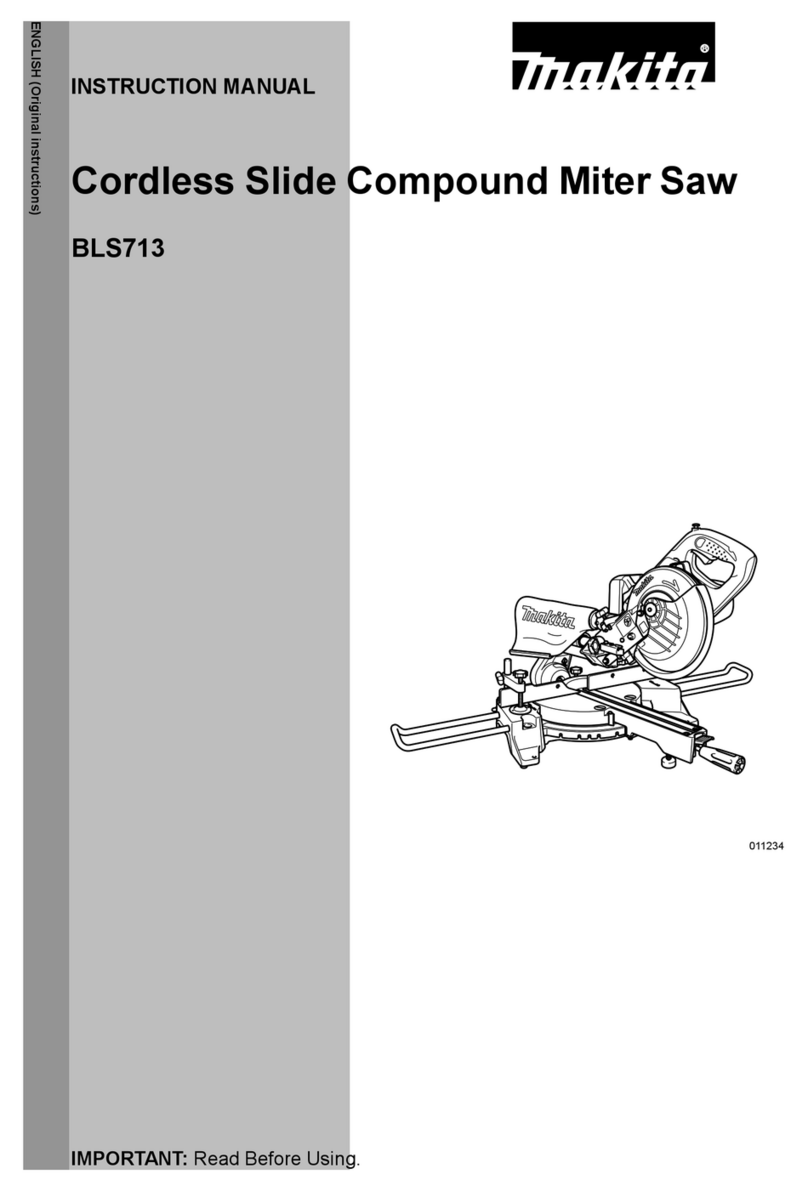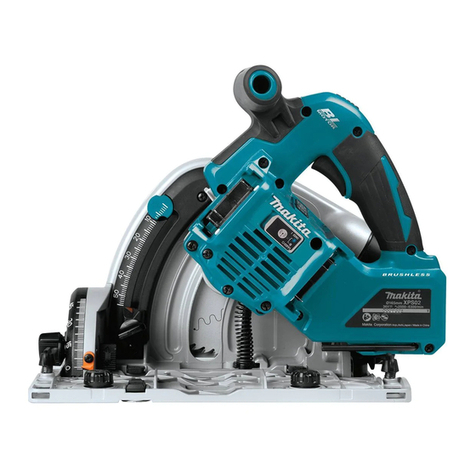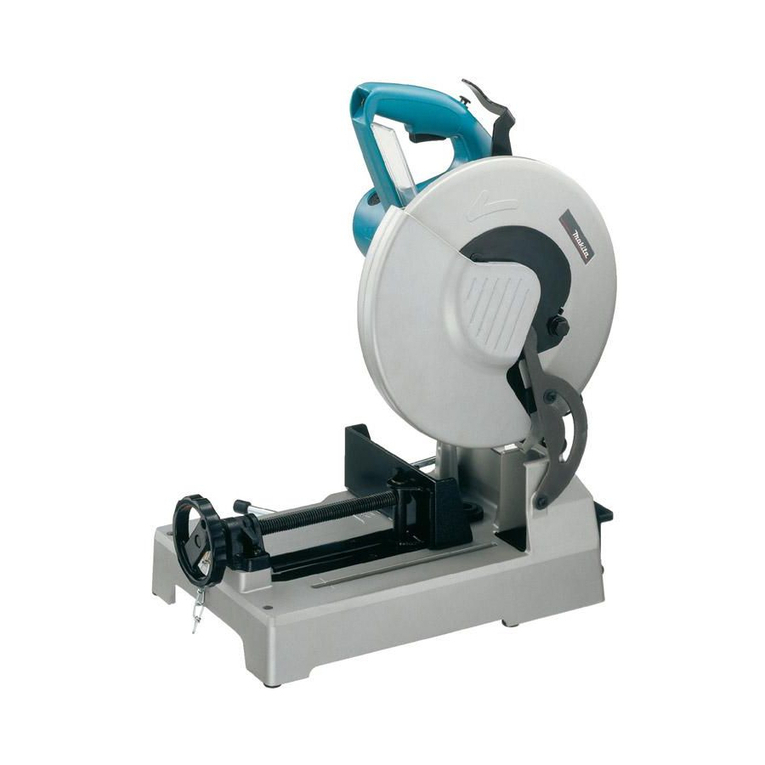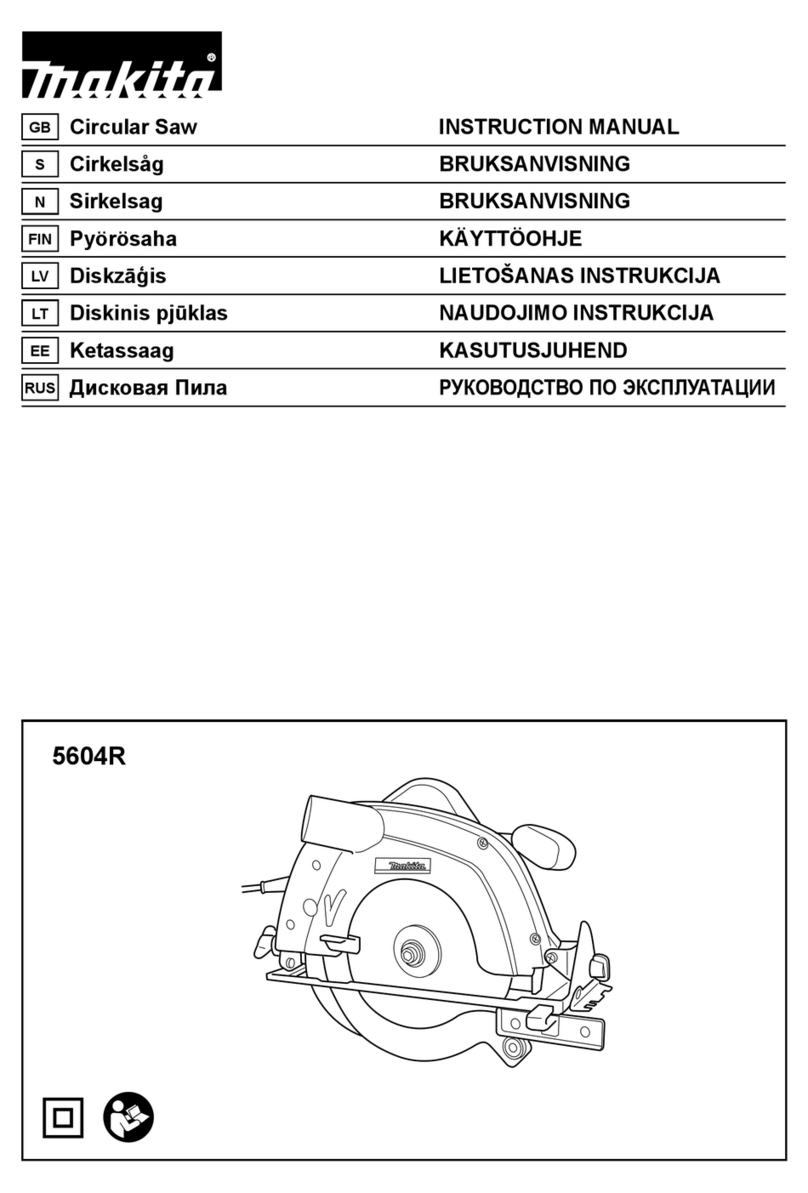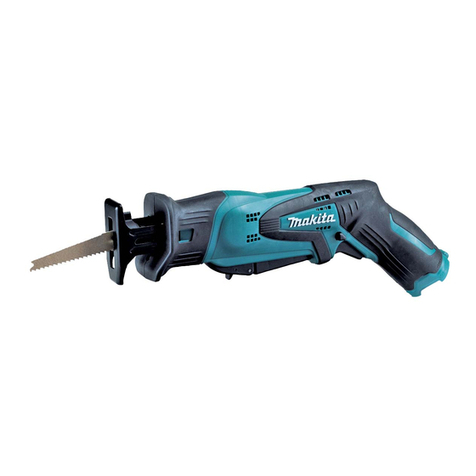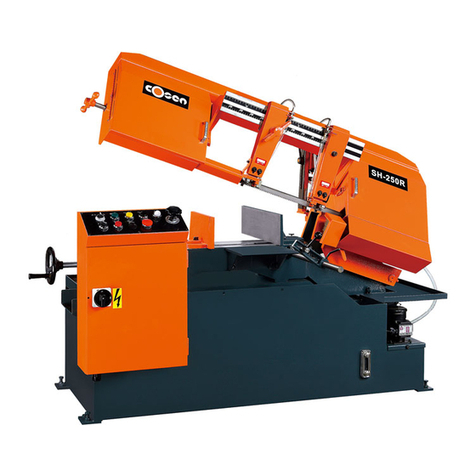8
INSTALLATION
Bench mounting
When the tool is shipped, the handle is locked in the
lowered position by the handle latch. Release the handle
latch by lowering the handle slightly and turn the handle
latch to the released position.
Fig.1
This tool should be bolted with four bolts to a level and
stable surface using the bolt holes provided in the tool's
base. This will help prevent tipping and possible injury.
Fig.2
Installing the holders (optional accessories)
Fig.3
Fig.4
Install the holders on both sides of the base and secure
them with screws.
FUNCTIONAL DESCRIPTION
CAUTION:
• Always be sure that the tool is switched off and
unplugged before adjusting or checking function on
the tool.
Blade guard
Fig.5
When lowering the handle, the blade guard rises
automatically. The guard is spring loaded so it returns to
its original position when the cut is completed and the
handle is raised. NEVER DEFEAT OR REMOVE THE
BLADE GUARD OR THE SPRING WHICH ATTACHES
TO THE GUARD.
In the interest of your personal safety, always maintain
the blade guard in good condition. Any irregular
operation of the blade guard should be corrected
immediately. Check to assure spring loaded return action
of guard. NEVER USE THE TOOL IF THE BLADE
GUARD OR SPRING ARE DAMAGED, FAULTY OR
REMOVED. DOING SO IS HIGHLY DANGEROUS AND
CAN CAUSE SERIOUS PERSONAL INJURY.
If the see-through blade guard becomes dirty, or sawdust
adheres to it in such a way that the blade is no longer
easily visible, unplug the saw and clean the guard
carefully with a damp cloth. Do not use solvents or any
petroleum-based cleaners on the plastic guard.
If the blade guard is especially dirty and vision through
the guard is impaired, use the supplied socket wrench to
loosen the hex bolt holding the center cover. Loosen the
hex bolt by turning it counterclockwise and raise the
blade guard and center cover. With the blade guard so
positioned, cleaning can be more completely and
efficiently accomplished. When cleaning is complete,
reverse procedure above and secure bolt. Do not remove
spring holding blade guard. If guard becomes discolored
through age or UV light exposure, contact a Makita
service center for a new guard. DO NOT DEFEAT OR
REMOVE GUARD.
Fig.6
Kerf board
Fig.7
This tool is provided with the kerf board in the turn base
to minimize tearing on the exit side of a cut. If the kerf
groove has not yet been cut in the kerf board by the
factory, you should cut the groove before actually using
the tool to cut a workpiece. Switch on the tool and lower
the blade gently to cut a groove in the kerf board.
Maintaining maximum cutting capacity
Fig.8
Fig.9
This tool is factory adjusted to provide the maximum
cutting capacity for a 355 mm saw blade.
When installing a new blade, always check the lower limit
position of the blade and if necessary, adjust it as follows:
First, unplug the tool. Lower the handle completely.
Loosen the hex nut at the rear of the gear housing. Use a
screwdriver to turn the adjusting bolt until the periphery of
the blade extends slightly below the top surface of the
turn base at the point where the front face of the guide
fence meets the top surface of the turn base.
With the tool unplugged, rotate the blade by hand while
holding the handle all the way down to be sure that the
blade does not contact any part of the lower base.
Re-adjust slightly, if necessary.
After adjusting, tighten the hex nut with the wrench while
carefully holding the adjusting bolt in position with the
screwdriver.
At this time, make sure that the handle can be locked in
the lowered position by turning the handle latch. If the
handle cannot be locked so, turn the adjusting bolt so
that the handle can be locked in the lowered position.
CAUTION:
• After installing a new blade, always be sure that the
blade does not contact any part of the lower base
when the handle is lowered completely. Always do
this with the tool unplugged.
Adjusting the miter angle
Fig.10
Loosen the grip by turning counterclockwise. Turn the
turn base while pressing down the lock lever. When you
have moved the grip to the position where the pointer
points to the desired angle on the miter scale, securely
tighten the grip clockwise.
CAUTION:
• When turning the turn base, be sure to raise the
handle fully.
• After changing the miter angle, always secure the
turn base by tightening the grip firmly.
